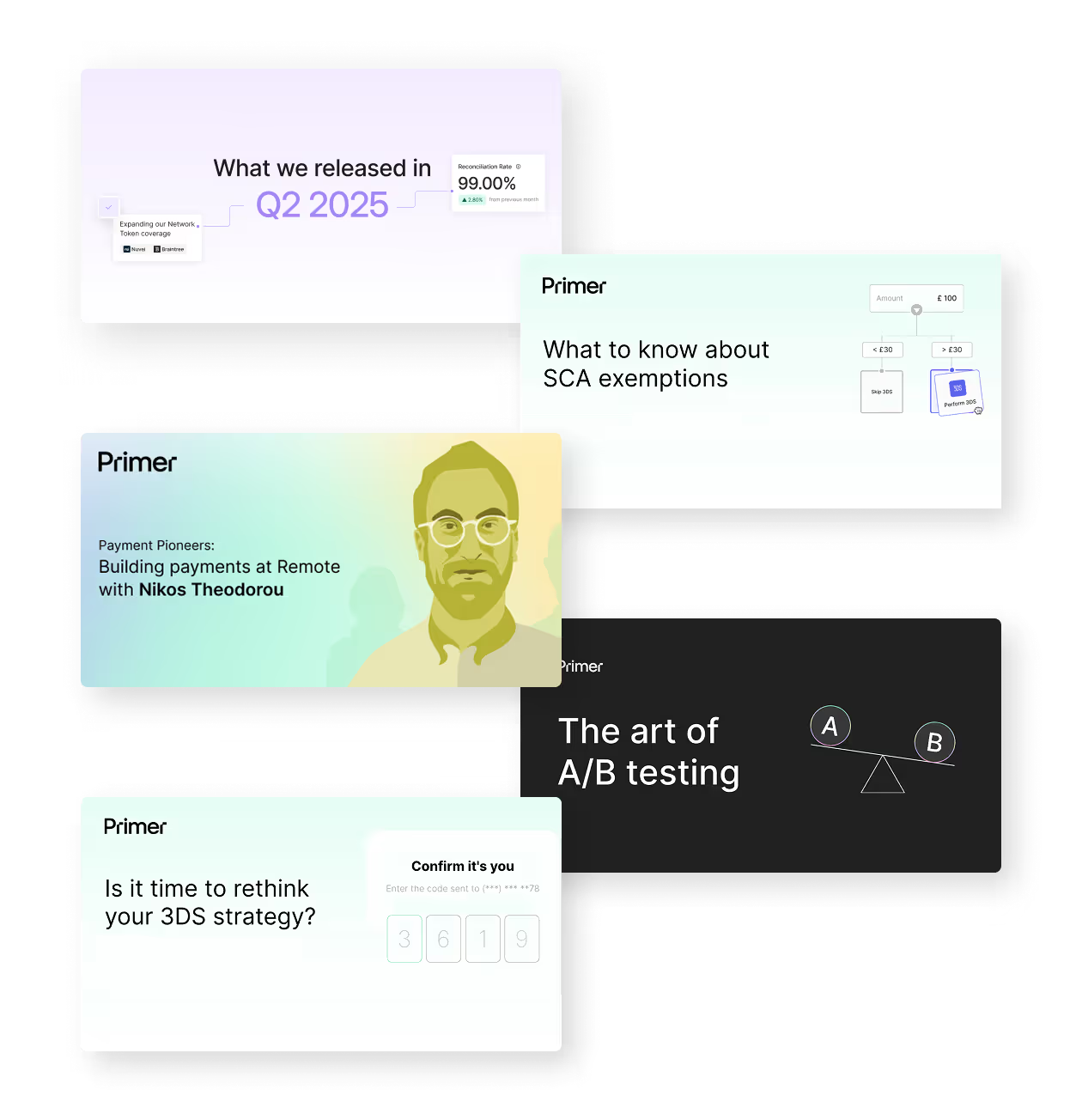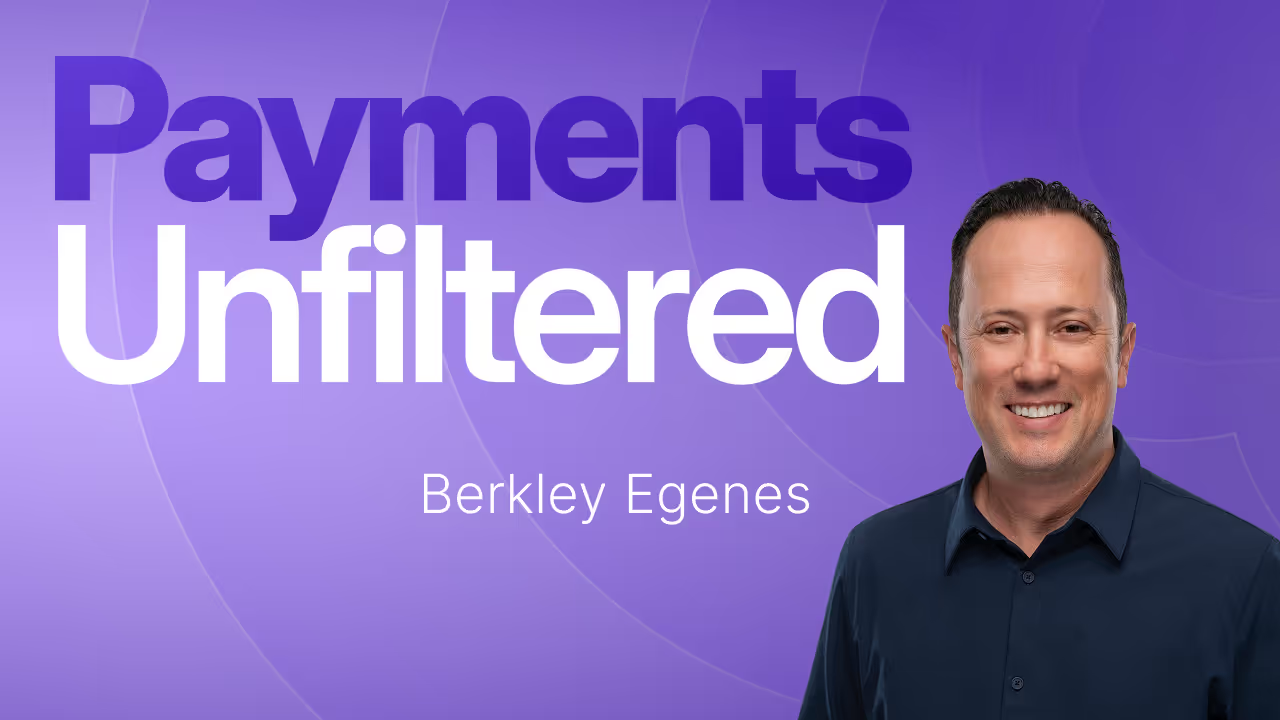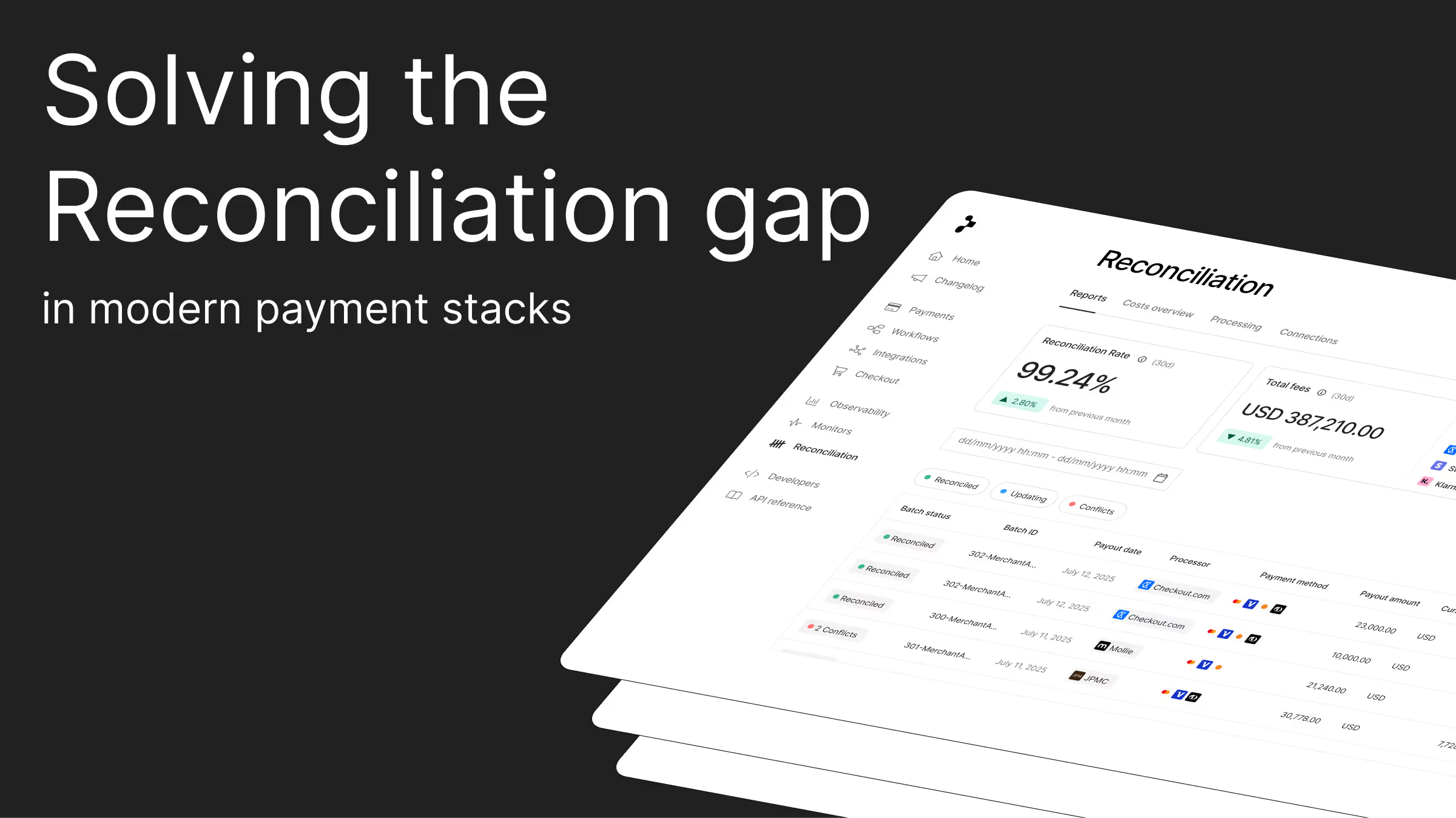As a business, you may be looking into payment orchestration for a few reasons:
- You’re expanding to multiple countries, and are looking for a faster and easier way to integrate with local payment processors and add more payment methods.
- You’re working with more Payment Service Providers (PSPs) and processors than ever, and are looking for a tool to help manage each processor and optimize payment flows and costs.
- You’re considering working with a payment orchestration provider but aren’t sure what to consider when comparing your options.
This article will explore the concept of payment orchestration, how it works, and why it's an essential tool for streamlining payment processes and improving the customer experience. We'll also share our tips for using it to maximize payment performance:
- What is payment orchestration?
- Why does payment orchestration exist and how does it work?
- Benefits of payment orchestration
- What to look for in a payment orchestration platform
- Why work with Primer for your payment orchestration?
- How Conforama uses Primer to manage in-store, online and marketplace payments
Note: Reach out to one of our payment experts to learn more how Primer can help with payment orchestration.
What is payment orchestration?
A payment orchestration platform (POP) consolidates integrations with different payment services, such as payment methods and PSPs, into a single platform.
Using payment orchestration, merchants can route transactions across these services based on custom rules and conditions. Essentially, it’s the control center for managing all your payment operations and needs.
An orchestration platform can handle different aspects of the payment process, including:
- Acceptance: Offers customers the most relevant payment methods, ensuring a seamless checkout experience.
- Routing: Optimizes payment routes based on specific conditions, improving success rates and reducing costs.
- Reconciliation: Automates and unifies reconciliation across all providers, ensuring smooth payment processing for everyone involved.
- Analytics: Provides a unified, global view of payment performance across all services.
Why does payment orchestration exist and how does it work?
Payment processing has become more complex and fragmented as the payment ecosystem evolves. Payment orchestration enables merchants to offer and adapt to new payment methods and payment technologies as they emerge. This ensures that you remain competitive in a fast-changing environment and offer the best possible payment experience.
To grasp the power and potential of payment orchestration, let’s take a closer look at how this technology works in practice when making a payment:
1. When a consumer adds a product or service to their shopping cart online, they are directed to the checkout page, where they choose their preferred payment method from a list of options.
2. Once the customer places their order, their payment details are sent to a payment gateway. This process of collecting payment data, tokenizing (encrypting) the card, and passing along the transaction to the appropriate gateway is handed by the POP.
3. With payment orchestration, the platform routes the payment request to a specific payment processor based on the logic used by the merchant. For instance, payments in France are routed to PayPlug, while payments in the UK go through Checkout.com. If the first processor cannot authorize the payment, the same payment request is sent to another processor using a feature called Fallbacks
4. Once the acquiring bank receives the payment information, it communicates with the issuing bank to verify and authorize the payment. If the payment is approved, the acquiring bank sends the authorization response code to the payment gateway and the merchant.
5. By using multiple payment processors and a sophisticated transaction routing system, payment orchestration reduces the risk of payment declines and maximizes payment acceptance rates. This improves the customer experience, increases revenue, and helps prevent lost sales due to payment processing issues. Payment orchestration can also be used to reduce the cost of payment processing.
.avif)
Find out if your business needs a payment orchestration platform: Reach out to our team to find out more.
Benefits of payment orchestration
Now that you know how it works, let's explore the perks of payment orchestration.
Optimize costs by negotiating better rates
Using a payment orchestration platform is an effective cost-optimization strategy. You can save time and money by unifying your payment stack and removing yourself from the build and maintenance of multiple payment providers and individual contracts.
You can route to the lowest cost provider on a transaction level, as perhaps one Payment Service Processor (PSP) has lower rates in a particular region. Plus, with their scale and expertise, payment orchestration providers can often negotiate better rates with PSPs and payment providers. This ultimately improves the bottom line and further streamlines the payment process to reduce overall expenses.
Increase speed to market by connecting to new processors in hours rather than weeks
Payment orchestration minimizes the time and engineering resources required to integrate and maintain payment options. In reality, it could take an engineer months to build and maintain one connection, from writing the code to integrating the new payment partner. However, you can do it with a payment orchestration platform in a few clicks.
Expand to international markets by offering more local payment methods
Research shows that 69% of consumers will abandon the shopping cart if their preferred payment method isn’t available. With access to a diverse range of providers, orchestration not only increases success rates on transactions but opens up new demographics. By dynamically presenting payment options at the checkout, it personalizes the customer experience, delivering a competitive edge.
Reduce fraud by leveraging 3DS in higher-risk payment flows
Having a unified platform that manages the transaction lifecycle across multiple payment methods and providers enhances fraud prevention, especially in terms of managing 3DS. In fact, these platforms' ability to leverage Strong Customer Authentication, combined with pre- and post-payment authorization checks, significantly reduces fraud and chargebacks.
Authorize more payments by optimizing your payment routes
With access to multiple payment methods and the ability to route payments to the most optimal provider, you can reduce the likelihood of declined transactions and improve authorization rates.
This is particularly important for businesses expanding or operating in global markets and analyzing which payment service providers (PSPs) have higher authorization rates for specific data points, such as particular issuing banks.
Get our payment orchestration buyers guide and free RFP template.
What to look for in a payment orchestration platform
Payment efficiency means using minimal resources to achieve high authorization rates, reduced fraud, and lower costs with a simplified technology stack. Consider these five aspects of a POP when selecting a payment orchestrator to help you maximize payment efficiency.
1. A unified frontend experience, regardless of the underlying processor
Customers expect their online experience with a brand to be consistent, especially when their interaction includes sensitive data—like at the checkout page. Each payment processor requires a different authentication journey, which can significantly impact the user's front-end checkout experience.
Leveraging a POP ensures a frictionless checkout experience by enabling rules across multiple processors, such as authentication, geographies, and currency. The end users are presented with the most relevant options to them and their payment methods without the user interface (UI) being impacted, resulting in higher conversion.
2. Business intelligence across your entire payment stack
A modern orchestration platform extracts, analyzes, and pinpoints areas of optimization within your payment stack. By gaining a single view of processor performance and presenting insights through visualizations and reports, you can make more informed decisions to improve performance and optimize costs. Some platforms will also alert your business and schedule reports based on set conditions, allowing you to respond in a timely manner.
3. Fallback and retries to recover sales or downtime
Payment orchestration enables online stores to enhance payment reliability and redundancy. An efficient POP can effortlessly route transactions to an alternative processor if one payment processor encounters issues or downtime. This mitigates payment disruptions and delivers a frictionless checkout experience to customers, no matter what’s happening behind the scenes.
4. Integrate your preferred third-party apps and services
Today, businesses need to use a multitude of apps and services. On average, five to six services are used to process one given payment—from payment methods and fraud providers to accounting software. Modern orchestration brings this together with the most relevant workflows to optimize costs and increase authorization and conversion rates.
5. PCI L1 compliant vault with tokens that can be used across PSPs
Secure payment processing is a well-known catalyst for building trust among customers. A PCI (Payment Card Industry) Level 1-compliant vault securely stores sensitive payment information using tokens. This protects customer card details and meets strict PCI standards. It also offers compatibility with various PSPs, allowing seamless integration and enabling organizations to process payments without exposing sensitive data or managing separate vaults.
Discover what else you need to consider when seeking a payment orchestration solution.
Why work with Primer for your payment orchestration?
At Primer, we operate as a Unified Payment Infrastructure, with orchestration being one of our strongest use cases. Our platform helps merchants optimize payment processing performance, build faster, and capture untapped revenue.
Here are a few reasons why merchants work with us to improve their payment efficiency:
Easily integrate with new payment methods, fraud providers, and processors with no code
The main challenge with integrating with new payment methods and processors is that it takes valuable engineering resources away from product development. For each new processor or payment method, the engineering team has to spend time doing research and then integrating the new processor with the company’s current payment flows.
With Primer, you integrate once and automatically gain access to new payment methods, payment gateways, and acquirers. You can then integrate them into your business with just a few clicks, with no code.

This is because Primer has a Unified Mapping Standard that is applied to all processors on the platform. Typically, if you wanted to integrate with Adyen, Stripe, and Braintree, for example, you would need to set up three different integrations with three different API schemas. Primer acts as an abstraction layer and removes much fragmentation, allowing you to quickly integrate with new payment methods and acquirers.
This allows you to move much more quickly as a company and, for example, vastly reduce your time to launch in a new country.
Here’s a real-life example: Dabble, a betting app in Australia, wanted to launch in the US. Instead of setting up direct integrations with US processors and therefore taking up valuable engineering resources, it used the Primer platform and was able to integrate with two new processors, Nuvei and Checkout.com, quickly. Within six weeks of launching in the US, Dabble was fourth in the app store’s sports betting and daily fantasy category.
Anthony Cugnetto, Head of Product at Dabble, explains: “With a single integration, we have total control over our end-to-end payment flows. And, crucially, without utilizing developer resources, we can add new payment methods and processors, scale into new markets, and change our payment routing and logic on the fly."
Customize your payment flows and optimize your payments according to attributes like BIN numbers, customer IDs, and payment methods
Setting up custom payment flows and optimizing payment routes manually is very difficult without a payment orchestration platform. It requires specialized engineering resources, which are hard to obtain if payments are not your core competency.
With Primer, you can use our Workflows tool to build end-to-end payment and commerce automation flows without writing code. Once a payment is triggered, you can define the conditions and rules to enable a specific workflow:

Workflows allow you to set conditions based on a multitude of attributes. For example, you can set a condition to run a specific workflow if the payment has a specific customer ID, or used a specific acquirer like Paypal, or is in a specific region.
Primer gives you the building blocks to create and manage your workflows based on your requirements. If you find that one specific provider is the best performing in a region, you can adjust that on the fly.
There are multiple other benefits to having this set up:
- Consolidating all your PSPs through a single integration allows you to compare costs between processors while keeping onboarding costs low.
- You can A/B test your hypotheses on the optimal payment routes and authorization rates and then update your payment flows according to your findings.
- You can load balance your payment processes (i.e., if a payment provider only gives a discount after you’ve processed 1,000 transactions, you can set a workflow to use that processor until you’ve reached that number and then switch providers afterward).
- You can use a feature like Primer’s Adaptive 3DS, which will only enable 3DS if the payment is likely to decline without it.
- It helps with derisking, so you can quickly reroute payments to a different PSP if one PSP has an outage.
And so much more! Using a tool like Primer gives you much more control over your payments while requiring no additional engineering resources.
Analyze and report on the performance of each PSP
It’s hard to create a payment strategy without a strong understanding of what is and isn’t working with your current processors. But to do that manually, you’d need to go individually into each PSP’s portal account, export the data, and standardize it to get a full picture—but it wouldn’t be in real time.
With Primer’s Observability platform, you can see all the data from all your processors in one place, in real time. You also get 100+ visualizations with 30+ filters to slide and dice your data in any way you want.

You’ll see your overall authorization rate across the past 30 days or your authorization date for a specific processor like Stripe or Adyen. You can even break down the data based on BIN numbers, MIDs, decline reasons, or authorization rates based on whether 3DS was enabled or not.
Having this control over the data allows you to evaluate your best-performing providers and make optimizations that could have a major impact while saving you the hassle of using multiple tools.
Reach out to our team to learn more about how Primer can help you with payment orchestration.
How Conforama uses Primer to manage in-store, online and marketplace payments
Conforama is one of Europe’s leading home furnishing retailers. Recently, it has started investing in payments as a strategic asset to support its business goals and future growth.
Over the last few years, accepting payments at Conforama has become increasingly complex. Ten years ago, they accepted payments via cash, cards, and sometimes cheques. But now, like many other businesses, they’ve gone multi-channel and sell through three main channels: in-store, online, and on their marketplace.
In addition to selling through multiple channels, they must comply with regulations like PSD2 and work with multiple payment service providers and payment options. They are also constantly dealing with new types of payment fraud.
Conforama picked Primer as their payment partner for a few key reasons:
- Great usability: Most payment solutions are not very user-friendly, whereas Primer is an intuitive platform that everyone in the business can use.
- Commercial-focused: The platform is built by a team that understands payments, which means it is much more flexible than others.
- End-to-end tooling: Primer has tools that allow the team to optimize every stage of the payment lifecycle.
- Strong foundations: Primer is mature in its operations, has a solid customer base, and has strong support from the VC community.
As Lucas Quinio, Head of Payments, explains, it made sense to partner rather than build its own tool:
“We don't have the resources to build and manage anything as robust and innovative as Primer. That made the build versus buy decision easy, and if we wanted all the capabilities a solution like Primer offers, we had to work with a partner.”
Today, Conforama uses Primer to:
- Keep using local acquirers while still being able to use other PSPs.
- Optimize their 3DS strategy and payment flows to remove friction and create the optimal customer experience.
- Offer more payment methods to customers, including an Account-to-Account payment option (and being able to launch in a matter of days and weeks rather than six months).
- Implement Primer to power marketplace payments.
- Use Primer’s data to better manage PSP relationships and ensure maximal performance.
Read more about how Conforama works with Primer here: Reimagining the role of payments at Conforama
FAQs: What is payment orchestration?
What’s the difference between a payment orchestrator and a payment gateway?
While a payment gateway is an essential software application that facilitates payment processing, a payment orchestrator is a unified platform that brings together a multitude of services. This helps businesses to manage multiple payment methods, gateways, and currencies in a more streamlined and efficient way.
Think of it like this: a payment gateway is like a toll booth that allows you to collect payment for passing through a specific road, while a payment orchestrator is like a traffic control center that manages multiple toll booths and routes traffic more efficiently.
Does my business need a payment orchestration platform?
There is no one-size-fits-all answer to this question, given that each business has unique needs. But if your business uses several processors and alternative payment methods (APMs) seek to enhance the efficiency and security of your payment stack, a payment orchestration platform might be the ideal solution.
What is an example of payment orchestration software?
Payment orchestration software, like that offered by Primer, has helped businesses like Zenyum, Beam, and Printify to consolidate their payment and business operations. This has allowed them to use their payment systems more frequently, with fewer risks.
By using payment orchestration software, these businesses have streamlined operations and made it easier to manage payments.
Book a call with our team to see how Primer can help you.



.avif)

